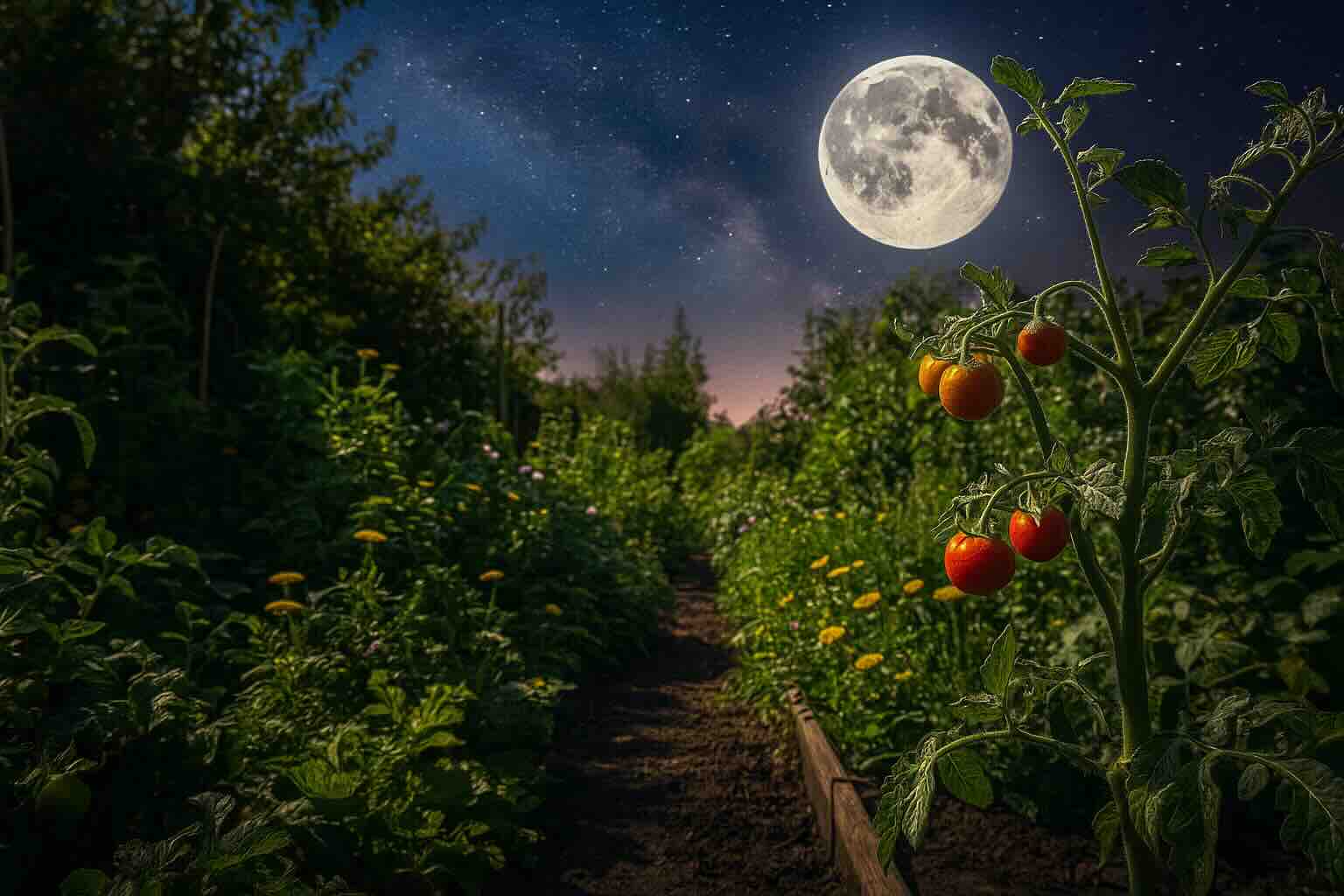For centuries, farmers and gardeners have looked to the skies for guidance. One of the most fascinating traditions is lunar gardening, a practice that connects planting, pruning, and harvesting with the phases of the moon. While it may sound mystical, the relationship between the moon and plants has roots in both folklore and science. Today, more gardeners are rediscovering this ancient knowledge to cultivate healthier crops and abundant harvests.
The Ancient Connection Between the Moon and Agriculture
Long before modern technology, early civilizations relied on the moon as a natural calendar. The rhythmic waxing and waning of the moon provided a reliable cycle for farmers to organize their planting seasons. Ancient Egyptians, Mayans, and European farmers all left records of moon-based agricultural practices. These traditions were passed down through generations, forming the basis of what we now call moon gardening.
The moon’s gravitational pull affects ocean tides, but it also influences the moisture content in the soil. Just as tides rise and fall, groundwater levels subtly shift with lunar phases, impacting seed germination and root development.
Understanding the Four Main Lunar Phases
To apply lunar gardening effectively, you first need to understand the moon’s cycle. Each month, the moon goes through four key phases, and each one is linked to specific gardening tasks.
1. New Moon
During the new moon, the sky is darkest, but beneath the soil, something powerful is happening. Energy is drawn inward, favoring strong root development. This is the ideal time to plant crops that grow underground, such as carrots, potatoes, onions, and radishes. Herbs with deep roots also thrive when planted during this phase.
2. Waxing Moon
As the moon begins to grow brighter, energy shifts upward, stimulating leaf and stem growth. This is the perfect period to plant leafy greens, grains, and annual flowers. Tomatoes, lettuce, basil, and spinach flourish if sown during the waxing phase. Gardeners also find this phase favorable for grafting and transplanting.
3. Full Moon
When the moon shines brightest, plants experience peak vitality. Moisture levels in the soil are at their highest, making this the best time for sowing above-ground fruiting plants. Beans, cucumbers, peppers, melons, and corn all respond well to full moon energy. It’s also the right moment to harvest crops for maximum flavor and nutrition.
4. Waning Moon
As the moon begins to shrink, energy flows downward once again. This phase is perfect for pruning, weeding, and composting. Root crops can be harvested now, and it’s a favorable time to store produce because plants are less likely to spoil. Farmers often use the waning moon to focus on soil improvement, fertilization, and long-term maintenance.
Scientific Insights Into Lunar Gardening
While lunar gardening may sound purely symbolic, modern science provides some explanations. Studies show that moonlight can influence plant metabolism and photosynthesis. Even low levels of reflected light at night may trigger biological rhythms in plants.
Additionally, the gravitational pull of the moon not only affects ocean tides but also subtle movements of water within the soil. Seeds absorb water more effectively during certain lunar phases, which may explain why germination rates are often higher when planting by the moon.
Practical Tips for Getting Started
If you’re curious to try moon gardening, you don’t need complex tools—just patience and observation. Start by downloading a lunar calendar or using a gardening app that tracks moon phases. Keep a journal of your planting dates and compare results. Over time, you may notice patterns that align with traditional lunar wisdom.
Here are a few simple tips:
- Plant root crops during the new moon.
- Plant leafy greens during the waxing moon.
- Plant fruiting crops during the full moon.
- Focus on pruning and soil work during the waning moon.
Blending Tradition and Modern Gardening
Lunar gardening does not have to replace modern horticulture—it can complement it. Many gardeners combine moon-phase planting with sustainable techniques like composting, mulching, and crop rotation. This holistic approach brings balance, allowing plants to grow in harmony with natural cycles while still benefiting from modern soil science and organic practices.
The Bigger Picture: Gardening in Rhythm With Nature
Whether you see lunar gardening as ancient wisdom or natural science, one thing is clear: working with nature’s rhythms brings deeper awareness to gardening. By aligning with the moon, gardeners reconnect with cycles that have guided agriculture for millennia. In an age of technology, this practice offers a grounding reminder that our food and gardens are still tied to the forces of the cosmos.
Try it yourself, even on a small scale. Plant herbs or vegetables according to the lunar calendar and watch how they thrive. You may find that the moon not only influences your plants but also transforms the way you experience your garden.
Final Thoughts
The moon has always been more than just a light in the night sky—it is a powerful force that touches every part of life on Earth, including your garden. From shaping tides to influencing seed growth, its presence is undeniable. By paying attention to its phases, you can deepen your connection to gardening and perhaps discover a little extra magic in the soil beneath your hands.
